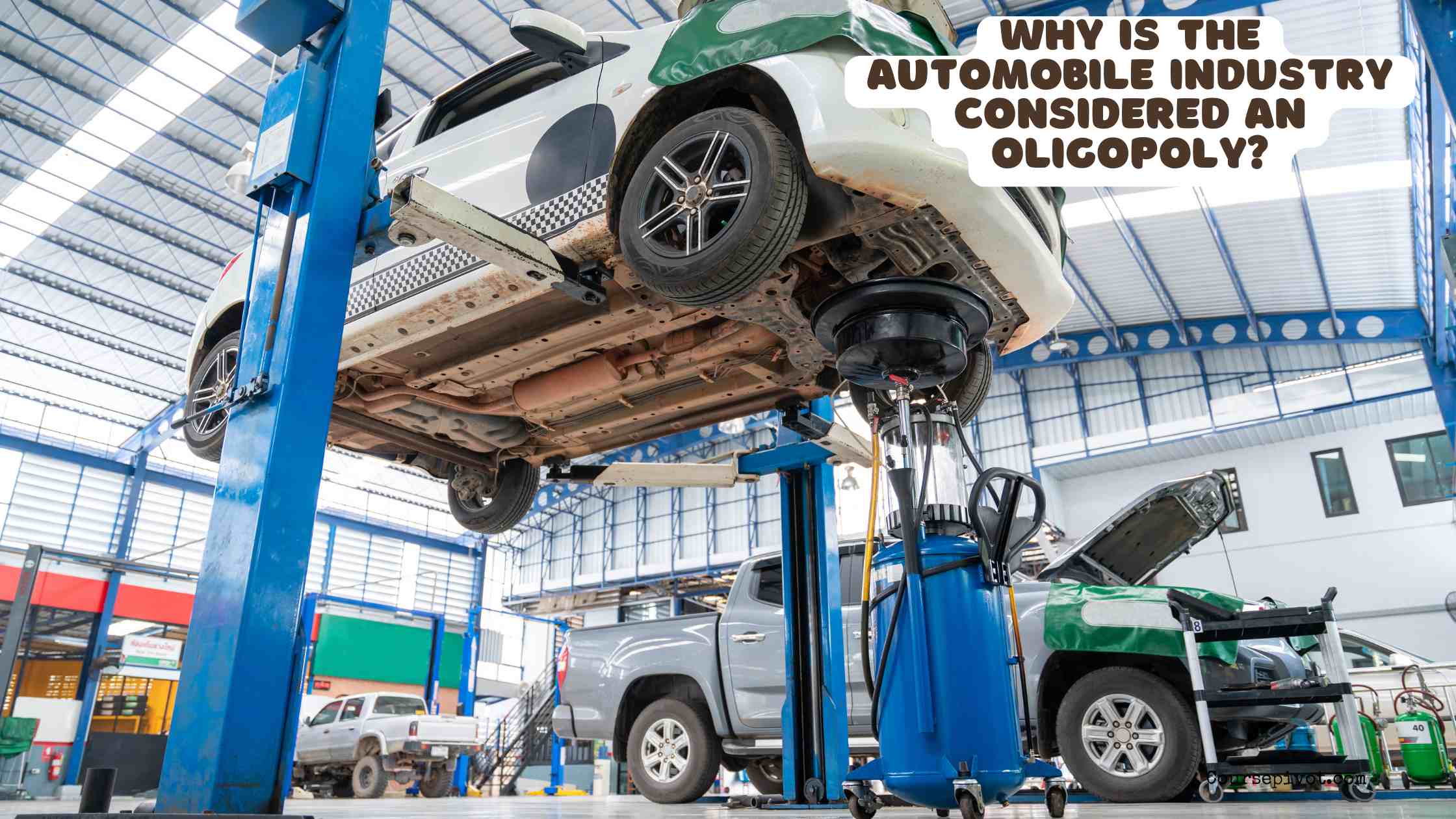
Why Is the Automobile Industry Considered an Oligopoly?
The automobile industry is considered an oligopoly because a small number of large firms dominate the market, control production, influence pricing, and create high barriers to entry, shaping competition and consumer options. In the U.S., companies like General Motors, Ford, Toyota, and Stellantis account for over 60% of vehicle sales in 2025, per industry reports. This structure limits competition and drives innovation within a concentrated framework. This blog explores five key reasons why the auto industry is an oligopoly, with examples, insights, and practical takeaways, empowering you to understand its economic dynamics.
Table of Contents
Dominance of a Few Major Firms
The automobile industry is controlled by a handful of global manufacturers, defining its oligopolistic nature. Few players hold significant market share. In 2025, top firms like Toyota, Volkswagen, General Motors, and Ford dominate global and U.S. markets, producing millions of vehicles annually. For example, Toyota and Volkswagen each hold about 10–12% of global sales, while smaller companies struggle to compete. This concentration allows these firms to influence pricing, production, and market trends, unlike smaller, fragmented industries.
High Barriers to Entry
Entering the auto industry requires massive capital, expertise, and infrastructure, deterring new competitors. Scale keeps newcomers out. Building a factory costs billions, and established brands benefit from economies of scale, reducing per-unit costs. Tesla, a rare successful entrant, spent over $10 billion to establish itself, a barrier most startups can’t overcome. Regulatory requirements, like safety and emissions standards, further complicate entry, reinforcing the dominance of existing firms and maintaining the oligopoly.
Interdependent Pricing and Competition
In an oligopoly, firms’ pricing and strategies are interdependent, as each company’s actions affect others. Price moves ripple across competitors. For instance, when Ford cuts prices on its F-150 trucks, General Motors often follows with discounts on its Silverado to stay competitive. This interdependence leads to price wars or tacit agreements to stabilize prices, as seen in consistent pricing for mid-size SUVs across brands in 2025. Such dynamics limit price competition compared to perfect competition markets.
Product Differentiation and Brand Loyalty
Auto companies rely on product differentiation and strong branding to maintain market control. Unique features create loyalty. Each firm offers distinct models, technologies, or brand identities—like Toyota’s reliability, Tesla’s electric innovation, or BMW’s luxury appeal. This differentiation fosters consumer loyalty, making it harder for new entrants to gain traction. For example, loyal Ford truck buyers rarely switch to Toyota, reinforcing market dominance and oligopolistic control through brand allegiance.
Technological and Supply Chain Control
Major auto firms control advanced technology and global supply chains, further solidifying their dominance. Innovation and logistics are tightly held. In 2025, companies like General Motors and Toyota invest heavily in electric vehicles (EVs) and autonomous driving tech, requiring R&D budgets in the billions. Their control over supply chains—securing chips, batteries, and parts—limits smaller firms’ access. For instance, during the 2021 chip shortage, large automakers prioritized their production, sidelining smaller competitors, a trend continuing into 2025.
Practical Tips for Understanding the Auto Industry’s Oligopoly
Here’s how to explore this economic structure:
- Track Market Leaders: Follow sales data from sites like Statista or Automotive News to see which firms dominate.
- Analyze Pricing Trends: Compare vehicle prices across brands to spot interdependent pricing.
- Study New Entrants: Research companies like Rivian to understand entry barriers.
- Learn About Regulations: Check EPA or NHTSA websites for rules impacting industry access.
- Engage Online: Discuss auto industry trends on platforms like X to gain consumer insights.
These steps clarify the oligopoly’s impact. A student analyzing Toyota’s EV strategy understood how R&D barriers limit competition.
Why the Oligopoly Matters
The automobile industry’s oligopolistic structure shapes consumer choice, pricing, and innovation. It drives efficiency but can limit competition, leading to higher prices or slower adoption of new technologies like EVs. Understanding this structure helps consumers and policymakers navigate its implications, from car affordability to environmental impact.
Key Takeaways
The automobile industry is an oligopoly due to the dominance of a few firms like Toyota and Ford, high entry barriers costing billions, interdependent pricing, brand loyalty through differentiation, and control over technology and supply chains. These factors restrict competition and shape market dynamics. Economist Dr. Alan Reed notes that this structure fuels innovation but challenges affordability, requiring careful consumer and regulatory awareness.
Cite this article
You can copy and paste your preferred citation format below.
Martin, L. & Arquette, E.. (2025, September 16). Why Is the Automobile Industry Considered an Oligopoly?. Coursepivot.com. https://coursepivot.com/blog/why-is-the-automobile-industry-considered-an-oligopoly/



